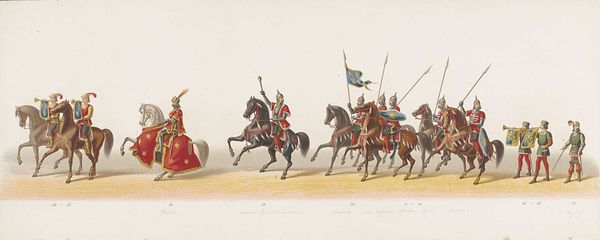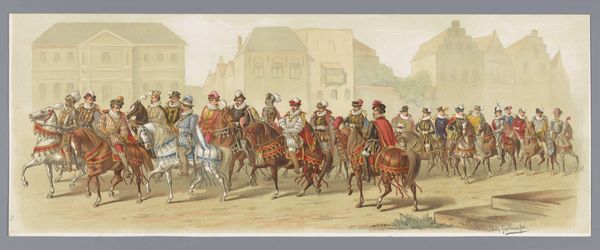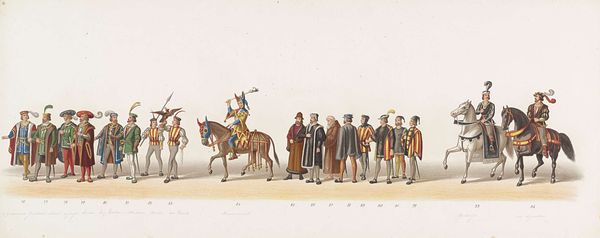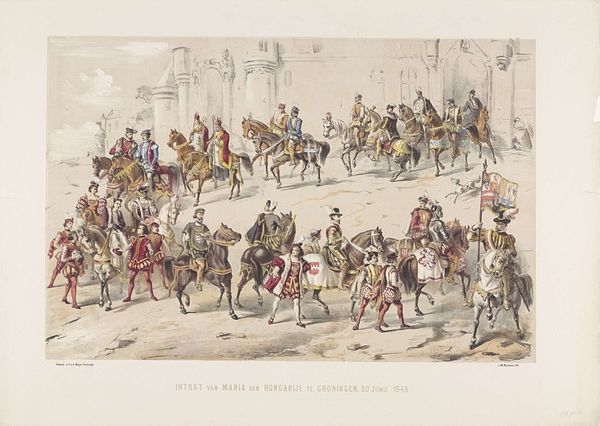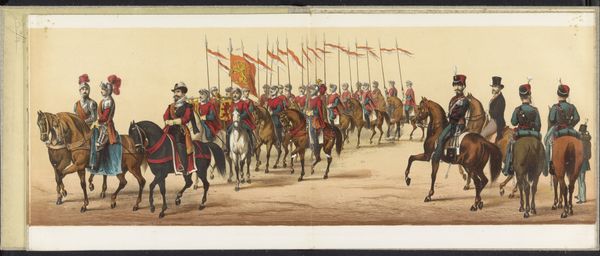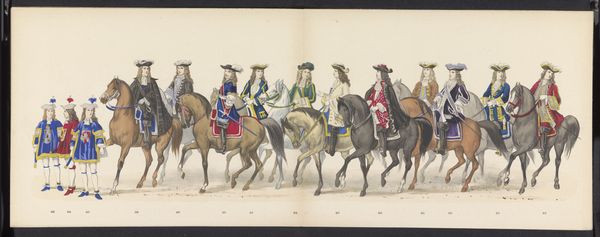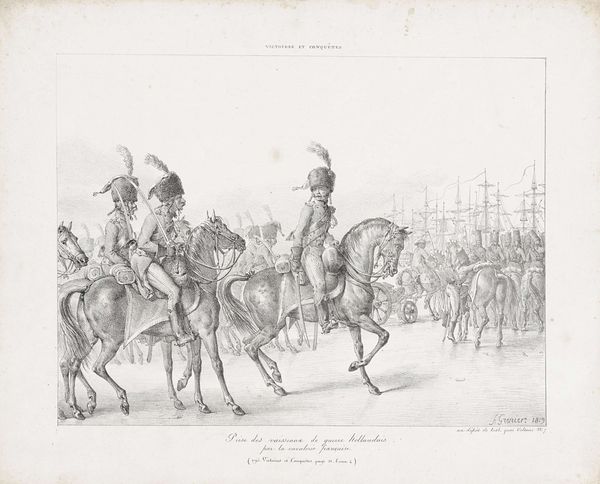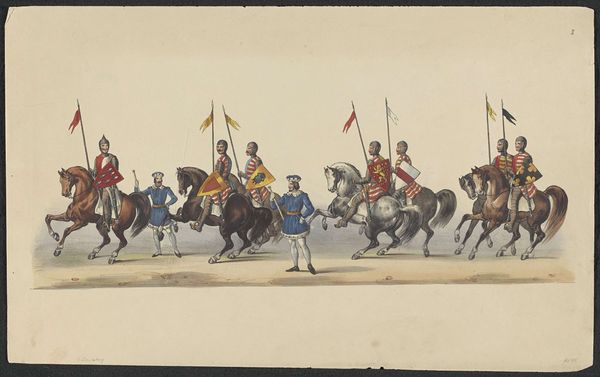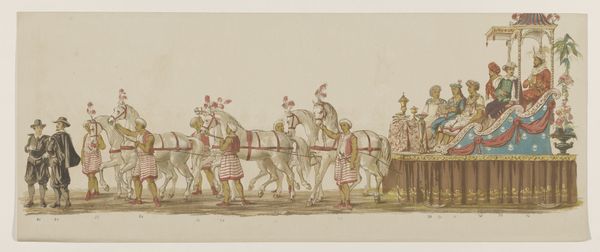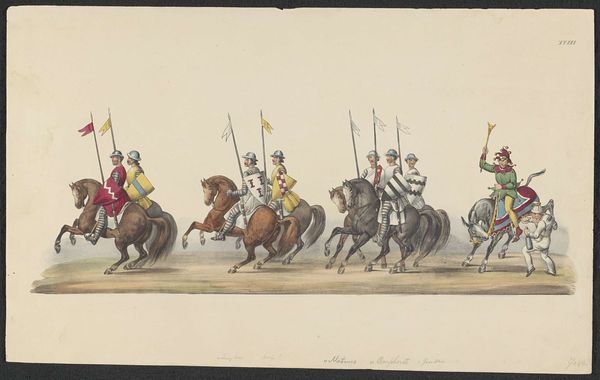
Dimensions: height 290 mm, width 725 mm
Copyright: Rijks Museum: Open Domain
This chromolithograph, made in 1873 by an anonymous artist, depicts a parade in Delft, Netherlands. The printmaking technique known as chromolithography revolutionized the production of colorful images in the 19th century. It allowed for the mass production of prints with a wide range of colors and intricate details, replicating the appearance of paintings or illustrations. This particular print likely involved a skilled artisan meticulously creating multiple lithographic stones, each inked with a different color. The stones were then carefully aligned and printed in succession onto paper. The material quality of this chromolithograph is significant. The texture of the paper, the density of the ink, and the precision of the printing all contribute to its visual impact. The artist's choice of colors and the way they are layered creates depth and vibrancy, giving the scene a lifelike quality. The social significance lies in its ability to disseminate images and information widely, contributing to the formation of collective memories and cultural identity. Understanding the materials, processes, and social context allows us to appreciate the full meaning and significance of this chromolithograph.
Comments
No comments
Be the first to comment and join the conversation on the ultimate creative platform.




